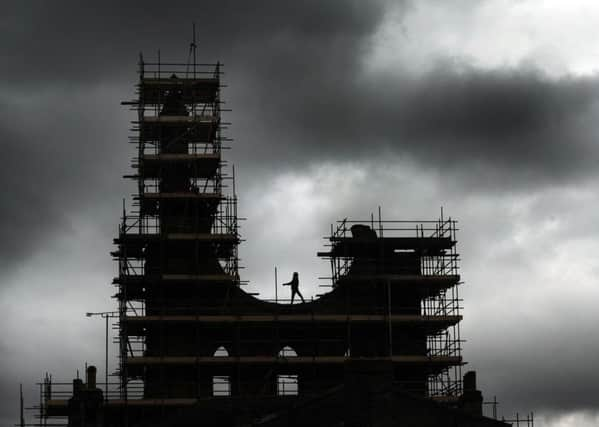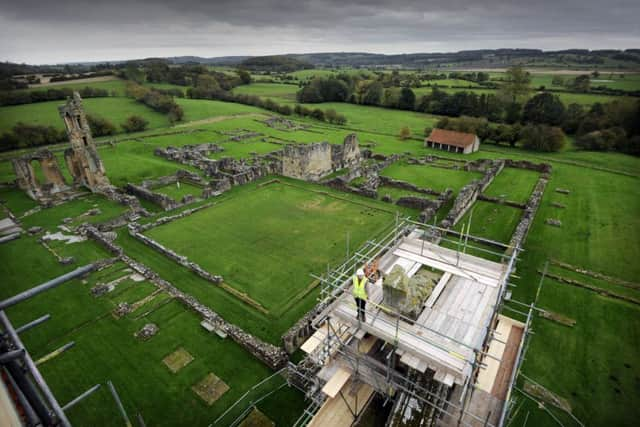Medieval mixture replaces 20th century concrete as restorers seize '˜chance of a lifetime' to preserve Byland Abbey


Byland Abbey, on the southern fringe of the North York Moors National Park, one of the most spectacular yet possibly least known of Yorkshire’s ruined medieval monasteries, was covered in scaffolding yesterday as they embarked upon a “once in a lifetime” project to turn back nature and keep the elements at bay.
They had turned back the clock, too, reverting to an ancient mixture of lime mortar to re-point the masonry.
Advertisement
Hide AdAdvertisement
Hide AdByland, whose striking west front borders the unclassified road from Thirsk and Coxwold to Ampleforth, is the earliest example of Gothic architecture in the north.


Founded in 1135 and absorbed by the Cistercians in 1147, it was described in the late 14th century as “one of the three shining lights of the north”, along with Rievaulx and Fountains abbeys, all within around 30 miles of each other.
Its rose window was in place for four centuries until Byland was dissolved in 1538 and went eventually to ruin.
But today’s restorers acknowledge that the first efforts to prevent further decay, in the first part of the last century, might have done more harm than good.
Advertisement
Hide AdAdvertisement
Hide AdThe site was cleared and excavated in the 1920s and cement and concrete was brought in to bolster the surviving architecture.


“Unfortunately, it was the worst thing they could have done,” said curator Dr Mark Douglas, who is leading the restoration for English Heritage, which now cares for the abbey.
“It has meant that water has been able to penetrate the stonework and not to get back out.”
Dr Douglas said the workers of the 1920s had done “an amazing job”, but added: “After all the years, the water has started to take its toll.
Advertisement
Hide AdAdvertisement
Hide Ad“It’s easy to protect a building from water when there is a roof on top but much more difficult when there isn’t.”
The new project will see the removal of damaging vegetation that has taken root in the stonework.
“The biggest problem is the height. It’s a very big job,” said Dr Douglas, whose team has covered the 80ft scaffolding tower with a photograph of the abbey for the benefit of visitors, who will continue to be admitted during the work.
He said the new restoration, the first phase of which will take five masons until the end of the year to complete, was a unique opportunity to secure the abbey in its present state for the next half century.
Advertisement
Hide AdAdvertisement
Hide Ad“It’s the first major work for 30 years and a once in a lifetime chance to preserve it,” said Dr Douglas, who described the present state of the ruins as “fair”.
Byland is one of the less visited publicly-owned ruins in Yorkshire.
“Because it is close to the road, people can drive past and think they have seen it,” Dr Douglas said. “But there is a lot more.”
Away from the road lie the remains of Byland’s great gatehouse and its former farm and corn mill.
The abbey itself includes one of the largest cloisters in England, at 145ft square, which was glazed in the 15th century to keep out the cold.